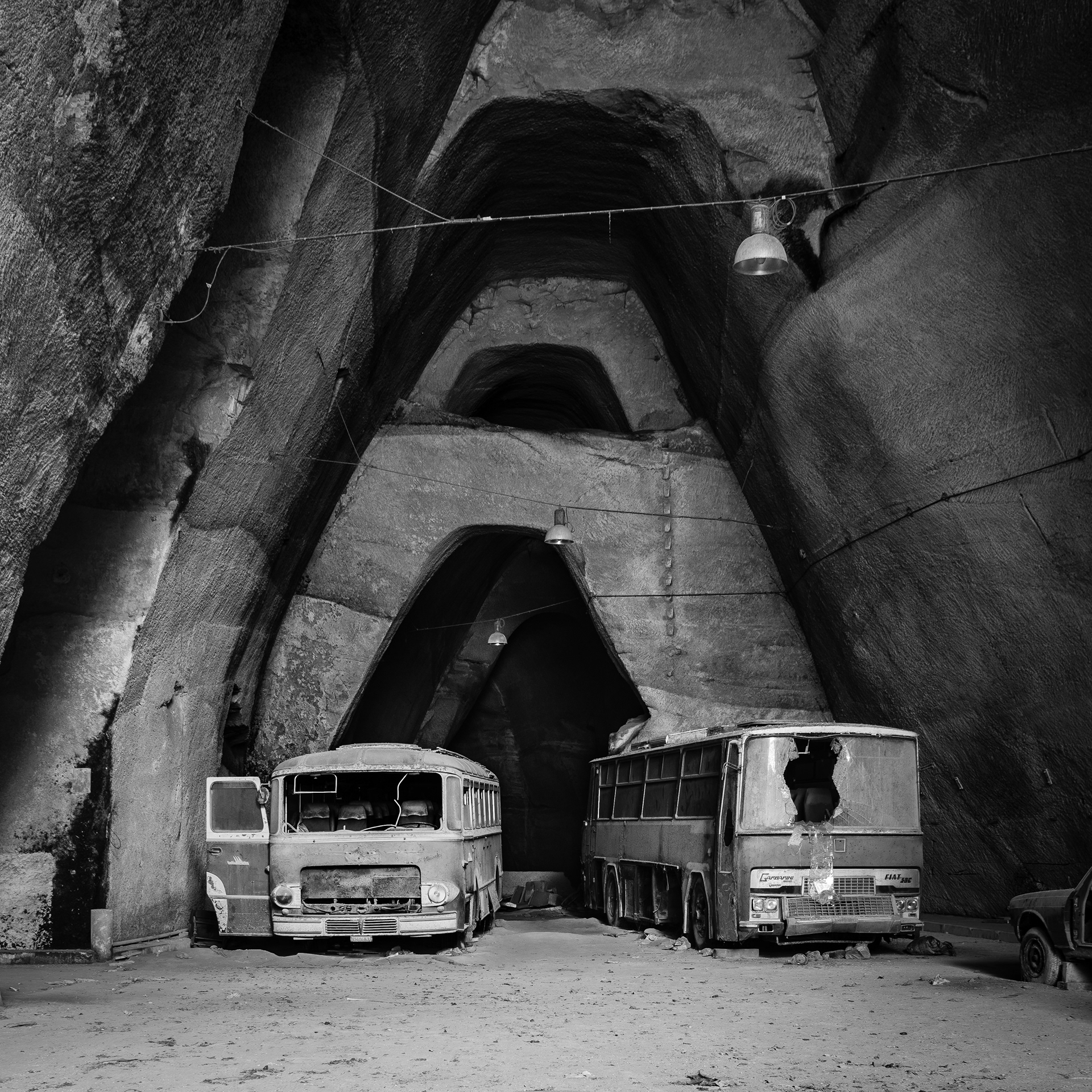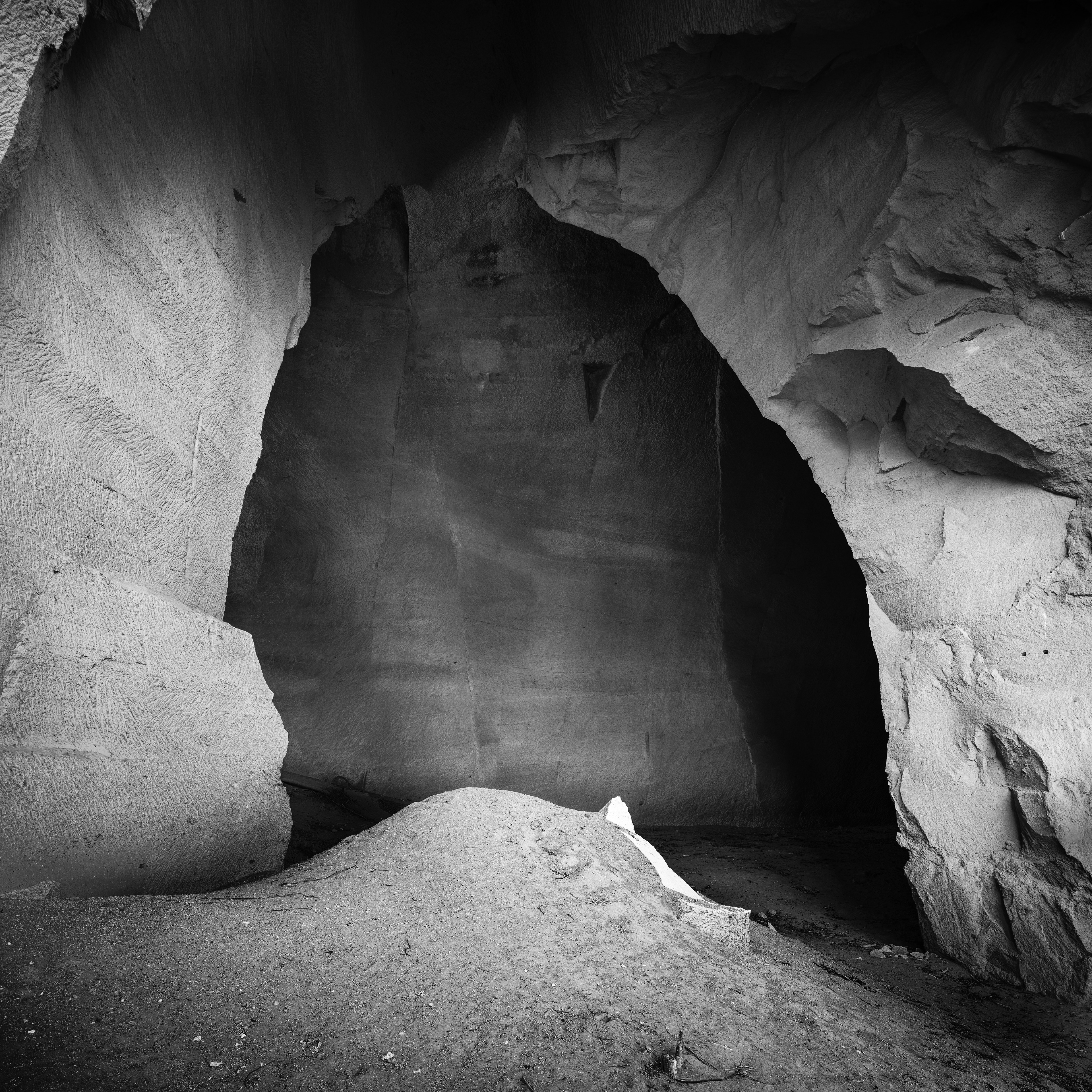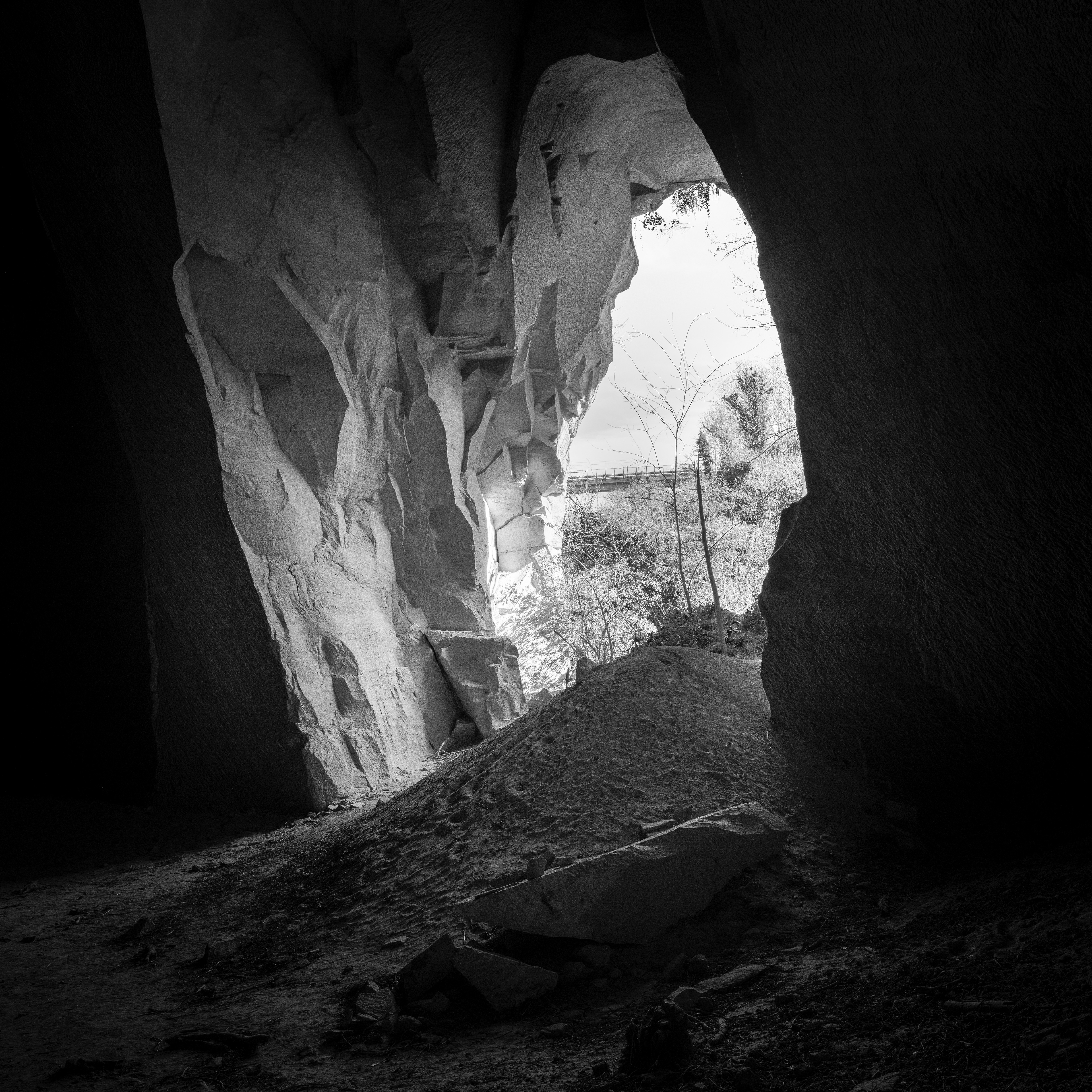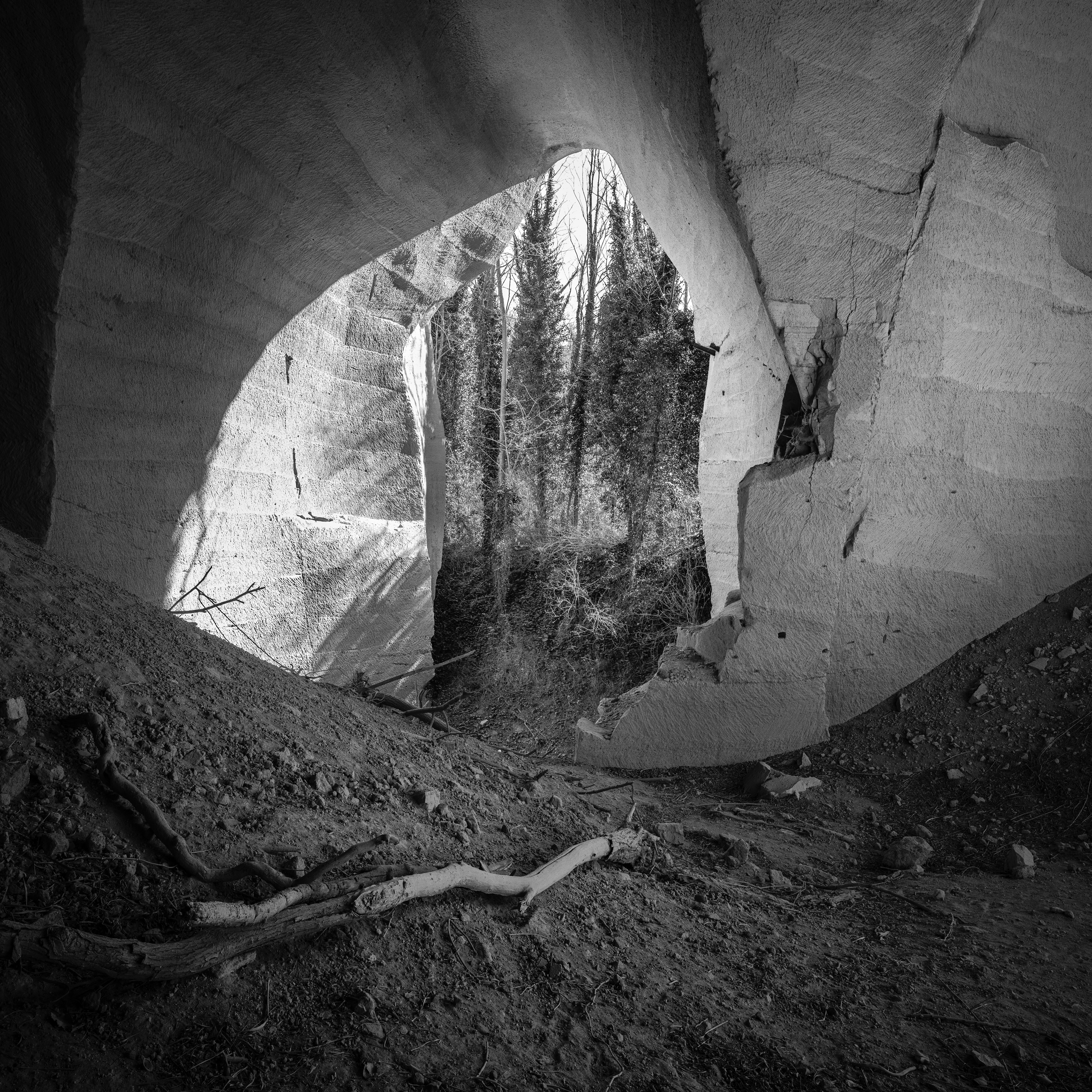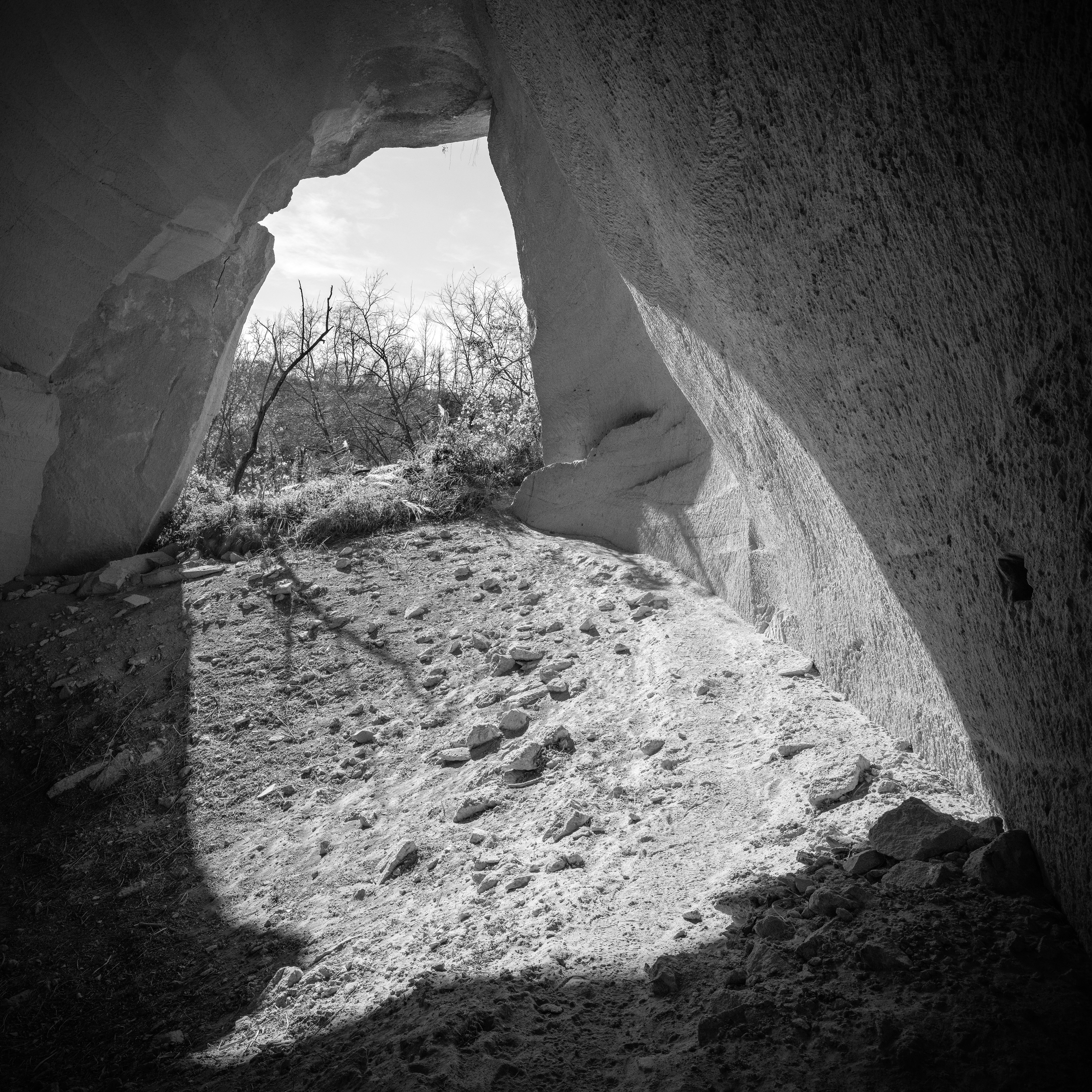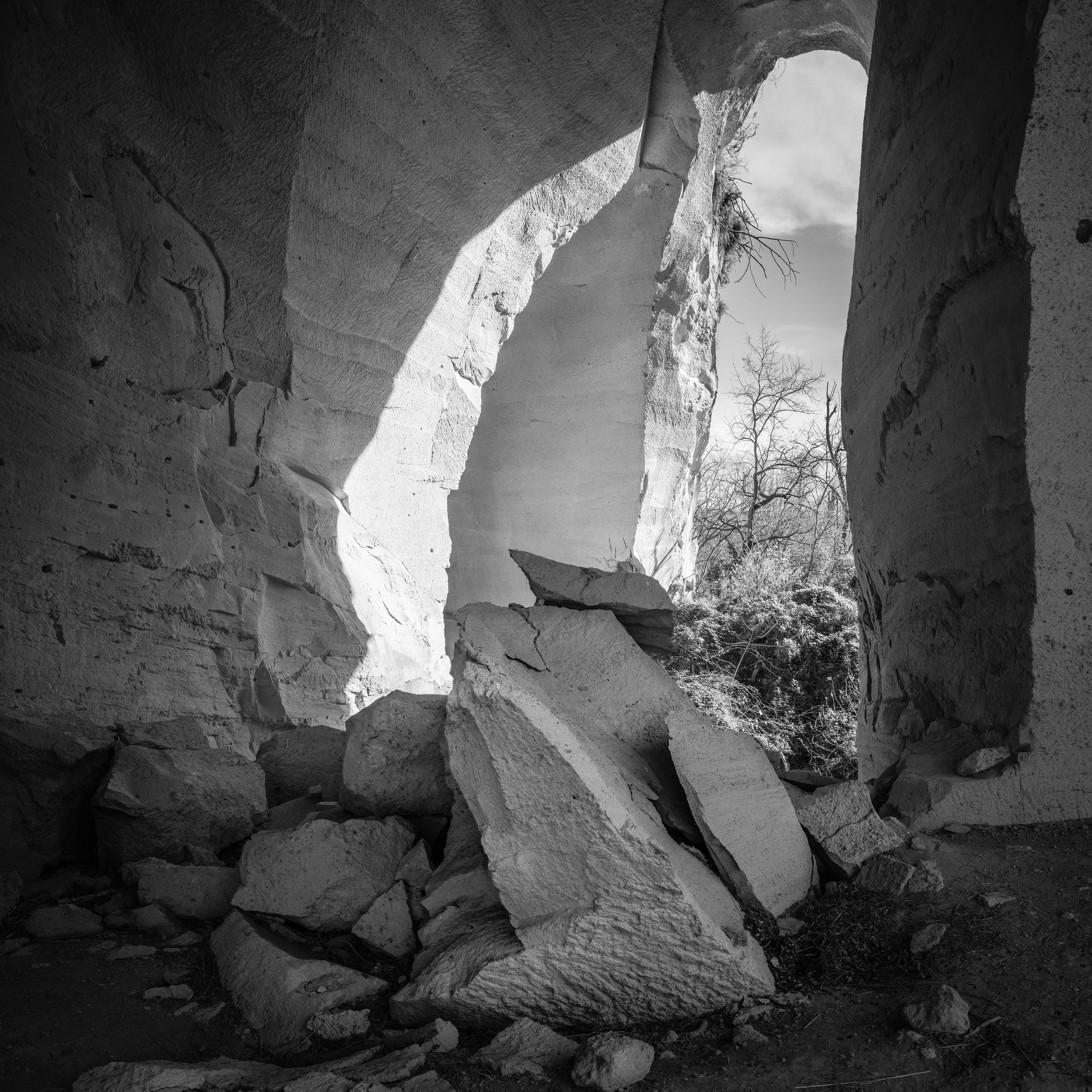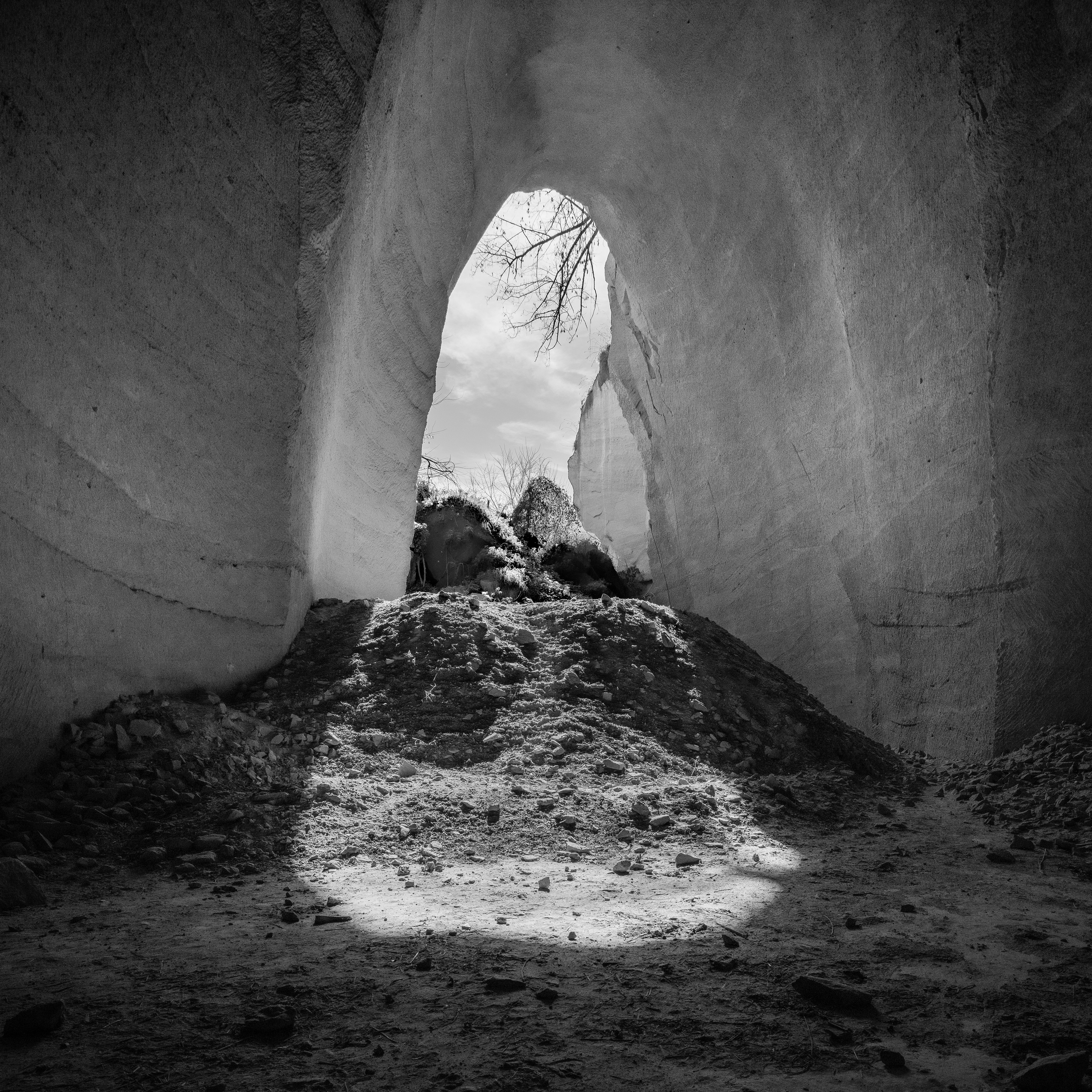Caveat (2022-2024)
ITA
Caveat: una parola latina che suona come un avvertimento, “stia in guardia”. È il titolo di una serie fotografica che esplora le cave del Vallone di San Rocco a Napoli, un tesoro nascosto e in pericolo, una sfida per l’occhio e la memoria. Le cave sono antiche cavità scavate nel tufo giallo, il materiale vulcanico che si è formato dopo un’eruzione dei Campi Flegrei circa 12.000 anni fa. Da queste cave è cresciuta Napoli, che ha usato il tufo per le sue costruzioni, ma che ha dato alle cave anche altri usi: rifugio, luogo di lavoro, deposito, discarica. Oggi queste cave sono coperte da una giungla urbana che ospita una biodiversità straordinaria, ma che lascia una ferita aperta nella roccia e nella storia. La serie fotografica cerca di restituire un “ritratto” storico e formale di queste cave, mostrando il loro valore architettonico, paesaggistico, ambientale, sociale. Le Cave del Vallone si presentano come stanze urbane, dove lo spazio è un vuoto, dove l’aria è chiusa da materia che ne traccia il confine. Un sistema che ha una sua logica, una sua geometria, una sua estetica, ma che è rimasto invisibile e inaccessibile per molto tempo, e che ora si propone alla scoperta e alla valorizzazione. Questa indagine cerca di mostrare che queste cave sono parte integrante della storia e della cultura di Napoli, ma anche che sono a rischio di degrado e di oblio. Le cave sono un gigante dormiente che aspetta di essere risvegliato con attenzione e rispetto, non solo come patrimonio geologico, ma anche come custode della memoria culturale napoletana.
EN
Caveat: a Latin word that sounds like a warning, “beware”. It is the title of a photographic series that explores the caves of Vallone di San Rocco in Naples, a hidden and endangered treasure, a challenge for the eye and the memory. The caves are ancient cavities dug in the yellow tuff, the volcanic material that formed after an eruption of the Campi Flegrei about 12,000 years ago. From these caves Naples grew, which used the tuff for its constructions, but which also gave the caves other uses: shelter, workplace, storage, landfill. Today these caves are covered by an urban jungle that hosts an extraordinary biodiversity, but that leaves an open wound in the rock and in history. The photographic series tries to return a historical and formal “portrait” of these caves, showing their architectural, landscape, environmental, social value. The Caves of Vallone present themselves as urban rooms, where space is a void, where air is closed by matter that traces its boundary. A system that has its own logic, its own geometry, its own aesthetics, but that has remained invisible and inaccessible for a long time, and that now proposes itself to discovery and enhancement. This investigation aims to demonstrate that these quarries are an integral part of Naples’ history and culture, but they are also at risk of degradation and oblivion. The quarries are a dormant giant waiting to be awakened with care and respect, not only as geological heritage but also as a custodian of Neapolitan cultural memory.

